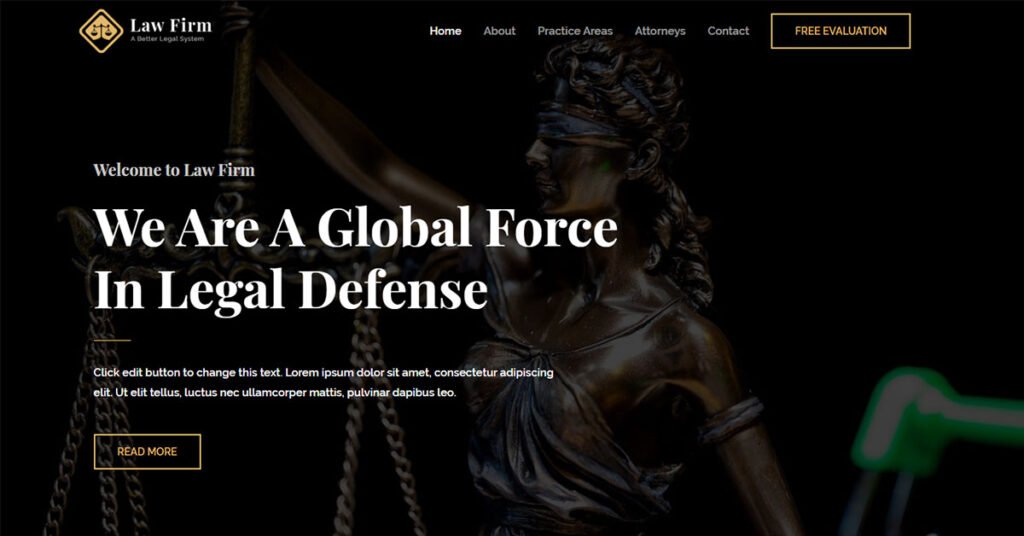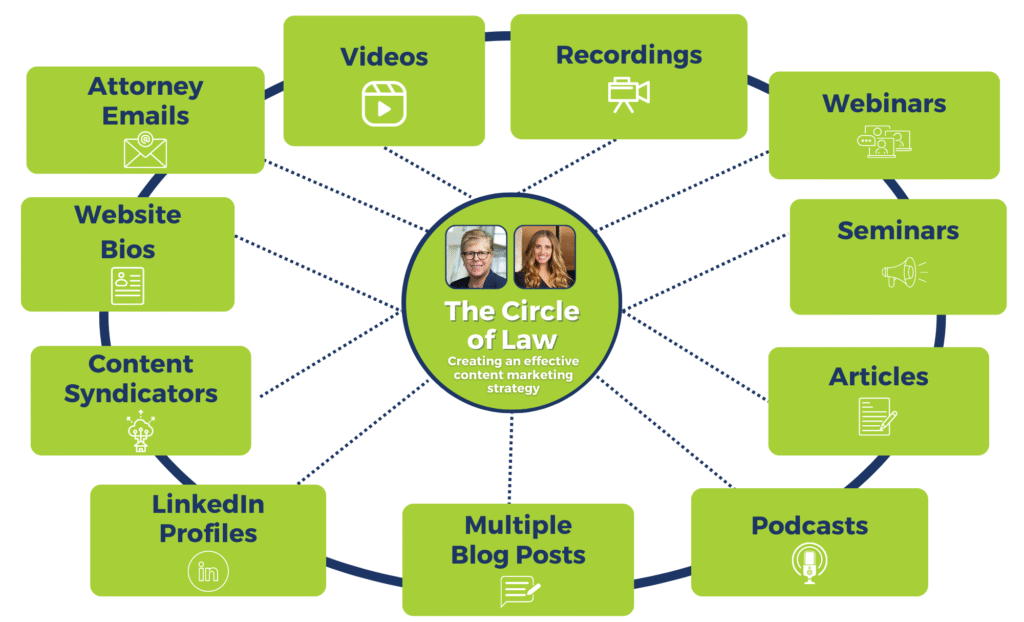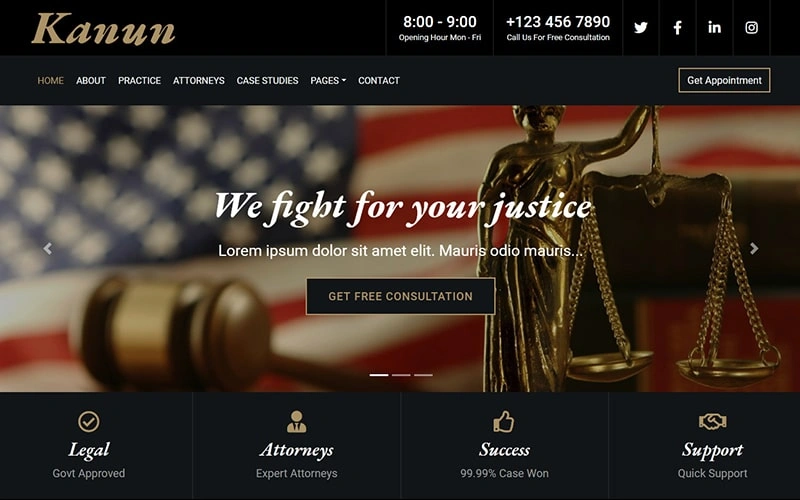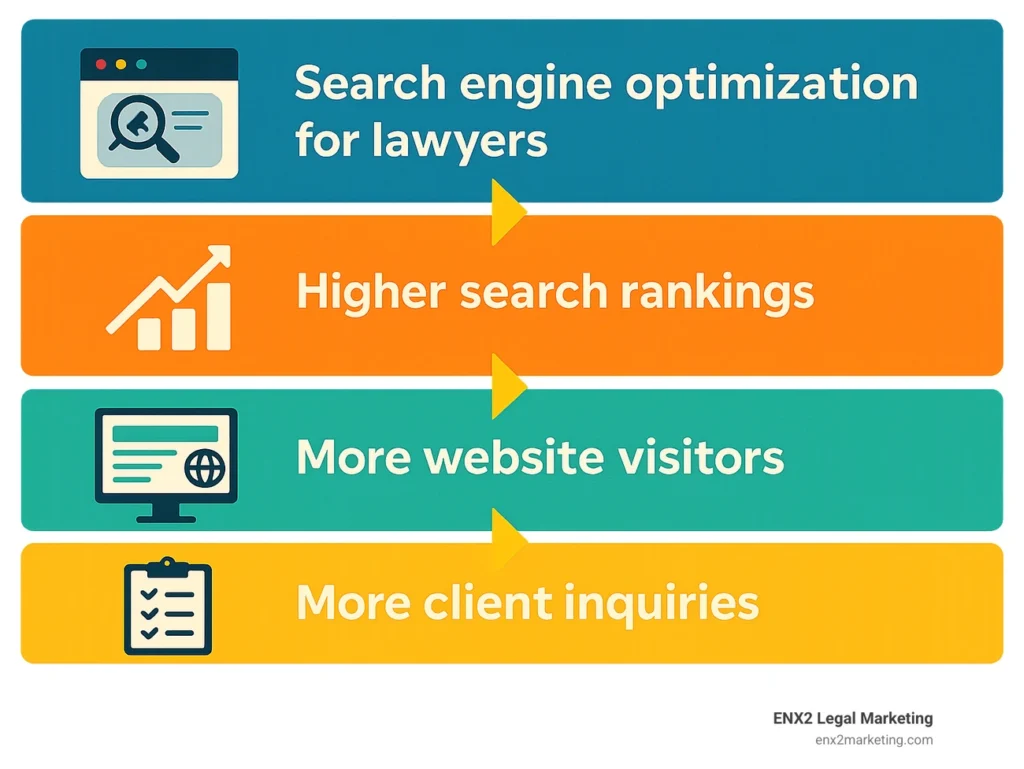Website development for law firms isn’t just about creating a sleek design—it’s about building a powerful tool for growth. In fact, law firm websites brought in over 100,000 leads last year through contact forms alone. That’s a clear sign that the right website can do more than just look good—it can drive real results.
Your law firm website serves a bigger purpose than just maintaining an online presence. It brings in new client leads, builds your credibility, and delivers better ROI from your investment. Your website shapes clients’ first impression of your business and shows them what you stand for. The digital world keeps evolving – nearly half of all web users now search by voice daily.
The legal website world looks completely different today. Modern clients do their homework before they reach out. They weigh their options, check reviews, and size up your expertise based on what they see online. Law firms need professional websites to stay in the game.
We’ll show you how to create a law firm website that works in 2025. Our comprehensive guide covers everything from design fundamentals to strategies that turn visitors into clients. Ready to dive in?
Why Law Firm Websites Matter in 2025

Image Source: www.paperstreet.com
Legal professionals can’t survive without a strong online presence in 2025. Recent data shows 87% of firms reporting having a website in 2023. But many firms still remain invisible online, especially smaller practices.
The shift in client behavior
Client behavior has changed dramatically when it comes to finding and choosing attorneys. Search engines have become the go-to resource, with 97% of respondents using them to find attorneys in 2024. Younger clients, especially those between 18 and 24 years old, now rely more on internet searches than traditional referrals.
Client response time expectations have also evolved substantially. 66% of legal consumers expect contact within one day after they ask about services, while 40% want to hear back within hours. Millennials and Gen Z clients set the bar even higher – 71% need a response within a day.
Communication methods have seen a big change too. Email (92%) and telephone (86%) still lead the way. But video conferencing (37%) and web conferencing (34%) have become important channels. Remote work has gained huge popularity, with 79% of clients preferring it compared to just 23% in 2018.
How websites influence first impressions
Websites serve as your first handshake with potential clients. Research shows you have about 50 milliseconds to make a good impression. About 74% of prospects check out a law firm’s website before they take any action.
Your online presence shapes how potential clients see your firm. A clean, easy-to-use design with clear messaging and quick access to information creates an uninterrupted user experience. People quickly switch to competitors when they face confusing layouts or poor mobile experiences.
Mobile-friendly websites are a vital part of success today. Google searches in the US happen on mobile devices 63% of the time. About 74% of law firms now have mobile-friendly websites, though numbers vary based on firm size.
Client-focused features on your website make a big difference. These include:
- Attorney profiles (96% of firm websites include partner profiles)
- Case studies and client testimonials
- Educational content that addresses client needs
- Easy-to-use contact forms and responsive communication tools
Why referrals alone aren’t enough anymore
Referrals are great, but they don’t cut it alone anymore. The modern legal marketplace gives clients lots of choices, which makes loyalty harder to maintain. Industry experts point out that “Firms can’t rely on the lifelong client-lawyer relationships of the past, nor can they depend on reputation or word of mouth alone”.
Search engine optimization runs the show now. Only 4% of searchers click on websites after the third position in search results. Even if your firm runs on referrals, potential clients will look you up online before reaching out.
Modern clients want more than just legal representation. They look for tailored experiences and added value in their business dealings. They need firms that provide bundled services, clear communication, and solutions that fit their specific needs.
Your website works as the central hub of your marketing strategy. It helps your firm grow by boosting visibility, credibility, and client involvement while traditional networking and referrals still play their part.
Core Elements of Great Law Firm Website Design

Image Source WpAstra
A successful law firm website needs design elements that create visual appeal and functionality. Good design draws potential clients and keeps them interested enough to take action. Here’s what your legal website needs in 2025.
Clear branding and visual identity
Your law firm’s website should instantly show who you are and what you stand for. Strong branding gives prospective clients a positive first impression. Start with a professional logo design that shows your practice’s values. Pick your colors with purpose—blue creates trust and professionalism, while dark green represents experience and tradition.
Stay away from generic stock photos. Put your money into high-quality original images that show your actual team and offices. This genuine approach builds trust with potential clients who want to see the people behind the firm.
Your brand becomes stronger when all pages look the same. Keep your color scheme, typography, and imagery uniform throughout your site. Your visual identity does more than look good—it shows clients what they can expect before they talk to you.
Mobile responsiveness and fast load times
Since over 54% of global traffic comes from mobile devices, your website must work well on phones and tablets. Your law firm’s website should adapt smoothly to any screen size.
Your mobile design should have:
- Click-to-call phone numbers at the top and bottom of pages
- Hamburger menus for navigation on smaller screens
- Compressed images that load quickly
Load speed affects user experience and search rankings directly. Studies show that when loading time goes from 1 second to 5 seconds, bounce rates jump by 90%. Your pages should load in under 3 seconds. You can achieve this by optimizing images, using browser caching, and choosing a good hosting provider.
Simple navigation and layout
Your website design needs user-friendly navigation. The site structure should make sense and stay consistent. Put call-to-action buttons in the upper right corner where users look for them, and make your contact information easy to find.
Don’t overwhelm visitors with menu options. Group navigation into seven or fewer items where possible. People pay most attention to items at the start and end of lists because of the serial-position effect, so put your most important pages in these spots.
Mehnav builds modern websites that work in today’s ever-changing world. Our sites load quickly, work on mobile devices, and come with over 50 built-in security features.
ADA compliance and accessibility
Your website must be available to everyone—it’s becoming a legal requirement. The Americans with Disabilities Act (ADA) requires websites to work for people with disabilities. You need:
- Good color contrast between text and backgrounds
- Alt text for images that screen readers can describe
- Video captions for those who can’t hear
- Keyboard navigation for those who can’t use a mouse
Making your site available to everyone helps more than just compliance. People with disabilities can use your services, you show your dedication to inclusion, and your SEO often improves. Work with experts to make sure your site meets current accessibility standards.
Creating Client-Focused Content That Converts

Image Source: clientsfirstconsulting.com
Your law firm’s website needs content that addresses your clients’ actual needs. Content speaking directly to potential clients works better than generic legal information. Here’s what turns website visitors into actual clients.
Writing in plain language
Legal jargon creates walls between you and your potential clients. Plain language makes your content available to readers at different literacy levels, according to justice guidelines. Your website writing should:
- Use everyday words instead of complex terms
- Keep sentences short (15 words or less)
- Use active voice instead of passive constructions
- Present information from your client’s point of view
Plain language shows you respect your readers’ time. Clients value lawyers who explain complex matters clearly. This skill reflects how you’ll communicate with them during representation.
Using testimonials and case studies
Client testimonials prove your firm gets results. Research shows 92% of people read testimonials before choosing services. About 88% trust online reviews as much as personal recommendations. Here’s how to collect great testimonials:
- Guide clients with specific questions
- Get permission to use their names (first name with last initial works well)
- Add photos where possible
- Place testimonials at key spots on your website
Case studies show your expertise at work through real client success stories.
Video introductions and attorney bios
Attorney biographies are among the most visited pages on law firm websites. Strong bios should:
- Show how your experience helps clients
- Add personal details that make attorneys relatable
- Use first-person voice where it fits
- Include clear next steps
Video introductions create stronger connections. Your potential clients can meet you before their first consultation, which makes the process less daunting.
Educational blog content
Educational content makes your firm a trusted resource and tackles specific client concerns. Your blog should have categories for different practice areas that answer common client questions.
FAQs and resource pages
FAQ pages help clients find quick answers while showing your expertise. About 98% of people use the internet to find local businesses. Great FAQ pages:
- Use client-friendly language
- Group similar questions together
- Add clear calls-to-action
- Stay current with client needs
Content built around client needs turns your website from a simple digital brochure into a tool that brings in new clients.
Building Effective Practice Area Pages

Image Source: HTML Codex
Practice area pages are the life-blood of your law firm website. They often determine whether potential clients reach out to you or look elsewhere. A smart strategy for these pages can turn your site from a basic online brochure into a powerful client-generating tool.
Structuring service pages for clarity
Your practice area pages work best with dedicated pages for each specific service. Instead of squeezing multiple practice areas onto one page, give each area of law its own space. This helps clients find what they need quickly and boosts your search rankings.
Your practice area pages should include:
- Clear calls to action that guide visitors toward contacting you
- Client testimonials relevant to that specific practice area
- Visual elements that break up text and make reading easier
- Bulleted lists highlighting your approach or process
Brief paragraphs and meaningful subheadings make information available at a glance.
Using internal linking to guide users
Internal links connect pages within your website and create pathways that benefit visitors and search engines alike. Research shows that a solid internal linking strategy boosts user engagement by providing continuous connection between related topics.
Your internal links should:
- Prioritize relevance over SEO benefits
- Use descriptive anchor text instead of generic “click here” phrases
- Link from broader topics to more specific subtopics
- Connect related practice areas logically
Internal linking spreads “link equity” across your site and helps important pages rank higher in search results.
Highlighting attorney expertise per area
Each practice area page must showcase your attorneys’ specific expertise in handling those cases. This personal element helps visitors understand who will manage their matters and builds trust in your capabilities.
Add biographical details that directly relate to the practice area, such as certifications, notable cases, and subject-matter expertise. This shows your intellectual influence in chosen practices and builds credibility with potential clients who research attorneys before they reach out.
Optimizing for SEO and Lead Generation

Image Source: ENX2 Marketing
Search engine visibility helps law firms acquire new clients. A well-optimized law firm website can turn visitors into clients through strategic techniques. Let’s get into the ways you can maximize your online reach.
Keyword placement and metadata
Law firm SEO depends on smart keyword placement. Your title tags, meta descriptions, headings need relevant keywords naturally woven throughout your content. Each practice area page should target one primary keyword to show search engines what’s relevant. This focused strategy lets you include variations naturally without confusing search engines.
Search engines need your metadata to understand page content quickly. Title tags work best under 60 characters while meta descriptions should stay under 155 characters to show up properly in search results. Local searches need location-specific terms since generic keywords like “personal injury lawyer” are too competitive.
Voice search and natural phrasing
Law firms can’t ignore voice search optimization as clients increasingly use digital assistants. Voice queries sound more conversational than typed searches. FAQ pages that directly answer common legal questions work well for these longer phrases.
Long-tail keywords should match your clients’ natural speech patterns. Rather than “divorce lawyer Chicago,” you could target “What should I do if I’ve been served with divorce papers in Chicago?” This strategy lines up with voice search behavior and helps you grab featured snippets.
Calls to action and contact forms
Strong CTAs boost conversions on law firm websites. Action verbs like “schedule,” “call,” or “get” work best with clear value statements. “Schedule Your Free Consultation Today” works better than a simple “Contact Us” message.
Meet Mehnav — we’re your dedicated website development partner. We create modern websites for today’s ever-changing world. Our sites load quickly, work on mobile devices, and come with over 50 built-in security features. We make it easy whether you want something new or need to upgrade your existing site.
Contact forms should gather information without overwhelming visitors. You’ll want fields for name, email, phone, and a message box at minimum. Add a clear disclaimer about how you’ll use client information and when they should expect to hear back.
Integrating chatbots and client portals
Modern law firms use chatbots to involve visitors right away. These tools can double your leads by answering simple questions and collecting contact details around the clock. They qualify leads, schedule appointments, and can even put together documents based on responses.
Secure client portals boost attorney-client relationships through centralized case information access. Clients can upload documents, check case status, and communicate safely with your team. This setup cuts down on phone tag and emails while keeping everything confidential through full encryption.
Conclusion
A law firm’s website acts as its storefront in today’s digital world. This piece covers everything that makes legal websites work as client generators.
Your website should showcase your firm’s identity and give users a smooth experience. Quick loading times, easy navigation, and mobile-friendly design affect how clients notice your services.
Content that speaks to clients turns visitors into leads. Simple language, real client stories, and helpful resources demonstrate your understanding of client needs. Well-laid-out practice area pages showcase your expertise and help visitors take the next step.
SEO plays a vital role since 97% of clients look for attorneys through online searches. The right keywords, voice search optimization, and strong calls to action combine to make your site more visible.
Modern tools like chatbots and secure client portals improve your service delivery. These features help you save time and give clients better service any time of day.
Your website demands regular updates to stay ahead. Put these strategies to work now and create a strong online presence that draws your ideal clients. Note that your website serves as your most valuable marketing tool, working non-stop to bring in business.



